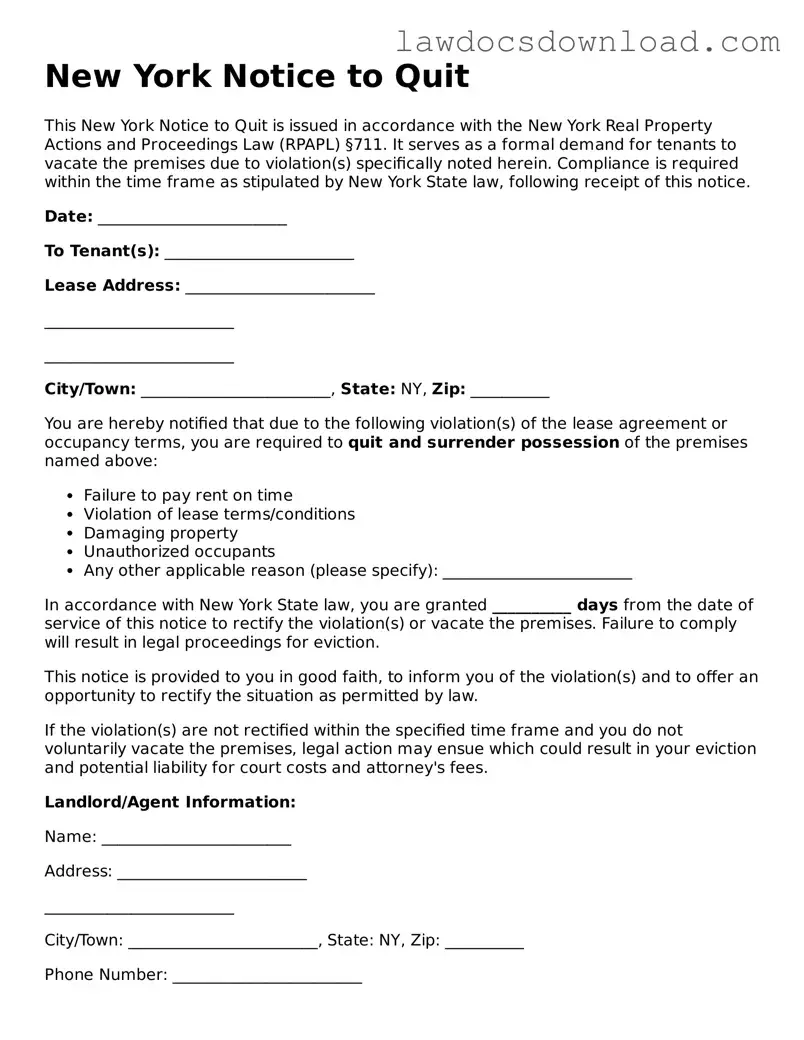New York Notice to Quit
This New York Notice to Quit is issued in accordance with the New York Real Property Actions and Proceedings Law (RPAPL) §711. It serves as a formal demand for tenants to vacate the premises due to violation(s) specifically noted herein. Compliance is required within the time frame as stipulated by New York State law, following receipt of this notice.
Date: ________________________
To Tenant(s): ________________________
Lease Address: ________________________
________________________
________________________
City/Town: ________________________, State: NY, Zip: __________
You are hereby notified that due to the following violation(s) of the lease agreement or occupancy terms, you are required to quit and surrender possession of the premises named above:
- Failure to pay rent on time
- Violation of lease terms/conditions
- Damaging property
- Unauthorized occupants
- Any other applicable reason (please specify): ________________________
In accordance with New York State law, you are granted __________ days from the date of service of this notice to rectify the violation(s) or vacate the premises. Failure to comply will result in legal proceedings for eviction.
This notice is provided to you in good faith, to inform you of the violation(s) and to offer an opportunity to rectify the situation as permitted by law.
If the violation(s) are not rectified within the specified time frame and you do not voluntarily vacate the premises, legal action may ensue which could result in your eviction and potential liability for court costs and attorney's fees.
Landlord/Agent Information:
Name: ________________________
Address: ________________________
________________________
City/Town: ________________________, State: NY, Zip: __________
Phone Number: ________________________
E-mail: ________________________
This document is intended to serve as a lawful notice for the purposes described herein. It does not waive any rights or claims the landlord may have under the terms of the lease or under New York State law.
Signed: ________________________
Date: ________________________
Receipt of Notice to be acknowledged by Tenant:
I hereby acknowledge receipt of this Notice to Quit on (Date): _____________
Signature of Tenant: ________________________
